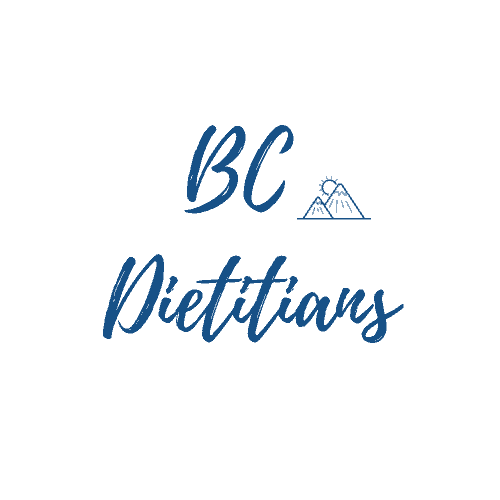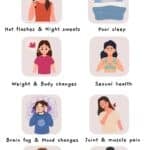Do you struggle with sugar cravings?
We surveyed about 500 of our clients and they report that sugar craving is one of their top challenges to healthy eating.
Before diving into strategies, we will review the basics about sugar and why cravings happen in the first place!
Are all sugars bad for you?
There are a two main categories of sugars:
- Natural sugars – which are found in fruits, vegetables, and dairy products.
- Free sugars – which are added sugars, such as in soda and candy, as well as sugars naturally present in honey, syrups, 100% fruit juices and fruit juice concentrates.
While no foods are inherently “bad”, foods containing natural sugars tend to provide greater nutritional value than foods high in free or added sugars.
Foods high in natural sugars typically contain other nutrients within their “food matrix”, such as fibre, protein, vitamins, and minerals which can contribute to fullness, stable blood sugar levels, and overall health.
In contrast, foods high in free sugars generally lack these beneficial components, increasing the chance of excessive energy consumption and rapid rises in blood sugar.
How much sugar is too much?
Most people shouldn’t be overly concerned about their consumption of natural sugars.
In fact, Health Canada recommends that we should aim for most of our sugar intakes to come from whole foods, such as fruit, vegetables, and unsweetened dairy products (aka natural sugars).
Instead, aim to reduce your intake of free sugars (which most people look for when they crave sugar).
The World Health Organization (WHO) recommended that less than 10% of our daily energy intakes come from free sugars, including limiting added sugars and avoiding sugar-sweetened beverages.
To learn more about the types of sugar and health recommendations, check out our blog [What you need to know about sugar]
Why do I crave sugar?
Food cravings are different from hunger!
We feel hungry when our brain triggers physiological signals to eat, such as stomach growls or feeling fatigued, often after a longer period without eating.
On the other hand, sugar cravings can stem a variety of either internal or external cues, such as:
Conditioned responses
- Smells or visual cues of sugary foods can lead to body responses (such as increased salivation and stomach activity) that lead to cravings. “Food cues” can also include advertisements and marketing for high sugar foods.
Reward Associations
- Similar to conditioned responses, we can develop associations between sugary foods and rewards. This connection may then trigger the reward center in our brains to release chemicals that motivate us to eat sugary foods more often.
Excessively restricting sugar and/or calories
- Completely cutting out a certain food can cause your brain to fixate on that food even more! Attempting to avoid all sugary foods or feeling guilty about eating them may result in increased cravings.
- Additionally, not eating enough during the day might leave you seeking out sugary foods later at night.
Emotional reasons
- Elevated stress or other intense emotions can raise cortisol, causing fluctuations in blood sugar and increased hunger hormones, potentially leading to sugar and/or other food cravings.
- We may crave sugar when we’re feeling bored as a way to subconsciously seek stimulation.
“Sugar addiction”
- Current research does not support “sugar addiction”, as in a traditional physiological dependence for high added sugar foods.
- However, some people may experience strong cravings for sugar due to prolonged exposure to high sugar foods, which can result in a heightened response from the brain’s reward system.
How do I stop craving sugar?

As you can see, sugar cravings are not always in our control – here are some strategies that may help set you up for success and reduce your sugar cravings:
Consume a balanced diet
- Follow a balanced diet, including adequate fiber and protein, as well as incorporating your favorite foods, to stay full and satisfied throughout the day.
- If you are wondering where to start, check out our blog on healthy eating habits: [5 Steps to Building Healthy Eating Habits]
Don’t cut out all sugar
- Including foods you love in your diet, including sugary foods on occasion, is a sustainable way to eat healthy while also giving yourself permission.
- Pair sugary foods with nutritious meals and/or snacks to avoid replacing whole foods with sugary foods.
Modify your environment
- Avoid buying sugary foods at home to reduce easy access – not having them at home can reduce the need to fight off temptations regularly.
- Smaller packaging can help with portion control, avoid buying in bulk.
- Keep these foods out of sight at home (e.g., up in the cupboard or back of the pantry).
Explore other ways to cope with your emotions
- If stress often makes you crave sugar, try out other stress-management techniques, such as improving your sleep, walking, meditation, enjoying a cup of tea or breathing exercises.
Distract yourself
- Keep yourself busy at your vulnerable time (for many people, this is in the evening after work) by going for a walk, calling a friend, cleaning, or getting into your favorite hobby (music, arts, crafts, reading).
Practice mindful eating
- Mindful eating encourages awareness of your body’s natural hunger and fullness signals. It is a balanced approach to eating that supports incorporating the foods you love without judgement to foster a healthier relationship with food.
Are zero-sugar sweeteners helpful?
Non-nutritive sweeteners (artificial sugars) are intensely sweet compared to real sugar but contain little or no calories.
While they can be useful in cutting back on intakes of sugar-sweetened beverages, there is no current evidence to support the use of artificial sweeteners to stop sugar cravings.
There is some evidence to suggest that they may even increase incidences of cravings by increasing taste preferences for highly sweet foods. It is best to consume both real and artificial sweeteners in moderation.
Do hormonal shifts cause sugar cravings?
It’s likely!! Many women often report experiencing increased food cravings, especially for high-sugar foods, few days before and during their menstrual cycle.
One proposed mechanism is that the body craves “rewarding” foods to stimulate the production of serotonin to relieve menstrual symptoms.
You can manage hormonal sugar cravings like any usual craving, by eating balanced meals, keeping yourself busy with a hobby or task, managing your symptoms and/or stress.
If you are having a higher sugar food to satisfy the craving, pair it with a high protein/high fibre meal or snack!
Will I experience “sugar withdrawals”?
Some people who make a rapid shift from very high sugar intakes to more moderated amounts may find the transition more difficult and report symptoms similar to mild withdrawal, such as mood changes, hyperactivity, and poor performance.
Reducing sugary foods may lower dopamine levels, contributing to symptoms similar to mild withdrawal.
It may take some time for your body to get used to the reduced sugar intake, try the strategies discussed in this blog and connect with an experienced dietitian, can make the process more manageable!
Blog contributor: Kiara Gaspari, RD







Add a comment